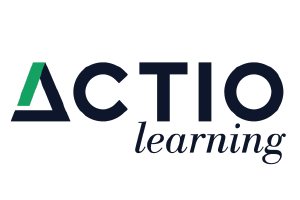Employee retention, future readiness and business success are not just top-of-mind for most organizations; they are essential for sustainable growth. And they all have one common thread: a strong learning and development (L&D) strategy. If employees are consistently given effective development opportunities, they are more loyal to the company and more agile in their roles, which translates to improved business performance and profitability.
Likewise, says Training Industry’s CEO Ken Taylor, a flimsy learning strategy — or lack of one entirely — leads to dissatisfied, stagnant employees who can negatively impact the business. Yet, one of the biggest challenges often cited by L&D leaders is getting buy-in for their programs.
There could be several reasons for this, including:
- Employees don’t see the training’s personal value.
- Learning is not embedded in company culture.
- The C-suite doesn’t see the training’s business value.
- Leadership isn’t communicating a consistent message.
To help training professionals resolve these issues and thereby foster business success, this article will share insights from training experts on how L&D can improve the overall employee experience.
4 Ways L&D Can Create a Better Employee Experience
1. Cultivating Culture and Engagement
L&D is a key driver of employee engagement. The creation of a rich learning culture that is personalized, relevant and integrated into the fabric of the organization can keep employees invested in their roles and the company, which benefits the organization on multiple fronts.
This tone needs to be established beginning with the employee’s first day on the job — because employees who are well-trained during onboarding are much less likely to be seeking another job. “Onboarding and initial training should be engaging and directly related to their job,” Taylor says. “The more personal you make the journey, the better.”
Getting feedback from employees on their learning preferences and career goals can help L&D create more personalized and relevant learning opportunities. For instance, do they prefer instructor-led training to eLearning modules? Are they interested in leadership development? Would they consider a lateral move? Asking these questions and showing a genuine interest in their development lets employees know they are valued and gives them more purpose in their roles, improving engagement, retention and performance.
Another way to drive engagement is to diversify delivery methods, offering learners choice when possible. Director of corporate research at Training Industry, Tom Whelan, Ph.D., says that to determine the best delivery method, you have to consider the specific needs of the learner and their role: What do they already know? What skills do they have? What do they need to know? What are they missing?
However, Dr. Whelan advises caution when it comes to adopting “shiny” new technology. While new technologies are exciting and can be more effective than their predecessors, their success depends upon their relevance to employee training needs. Choose tools and modalities that align with the skills you’re developing to ensure learners are as enthusiastic to utilize them as you are to implement them. Otherwise, he says, “You have a very fancy trough, but where are the horses?”
By aligning training to individual goals and utilizing innovative learning technologies to tailor content to the learner’s pace and style, L&D can create a rich and meaningful learning experience for employees.
2. Elevating Employees With Career Mobility
A major contributor to employee satisfaction is investment in their career development. Take Cisco, for example: Year after year, a phenomenal employee experience puts Cisco at the top of Fortune’s best places to work lists. People leader at Cisco, Eric McArdle, CPTM, emphasizes the important role a strong learning culture plays in that experience: “Opportunity is what L&D brings to the employee experience. The ability to build new skills to professionally grow, to revise or refresh your current skill set is pivotal in retaining and attracting talent.”
The data agrees: Three of the top five reasons employees leave their jobs are related to skills development. Employees want to work for organizations that will invest in their career development through upskilling and reskilling. In return, businesses benefit from the lower costs and higher efficiency of hiring from within.
To support employee growth, McArdle recommends taking advantage of developments in data-driven technologies that can tailor learning paths to individual goals. And he points out that high-performing organizations are offering tuition assistance and employee certification programs to further invest in employee development.
CEO and chief learning officer of WeLearn, Sean Stowers, CPTM, echoes the importance of education as a benefit, adding that learning leaders also need to consciously democratize these offerings, making sure everybody has the opportunity to learn and knows what opportunities are available to them. This isn’t to say the actual monetary investment will be the same per employee because employees have varying needs and goals. “While some investments are far smaller than others, they can be just as impactful when it comes to retention, building employee loyalty and fulfilling the employee value proposition,” Stowers says.
Organizations must look at the bigger picture and see the strategic importance of L&D in long-term business success. A focus on employee career development not only enhances the effectiveness of training programs but also demonstrates the organization’s commitment to individual career paths, significantly impacting employee motivation and engagement.
3. Improving Communication Across the Board(room)
At the heart of the employee experience, good or bad, lies communication. Communication between employees and managers, managers and trainers, and trainers and upper management must all be aligned to ensure consistent messaging regarding policies, opportunities and expectations. If employees are receiving mixed messages, they won’t be able to take full advantage of company offerings, which leads to confusion, frustration and lower retention.
However, this is easier said than done. Training Industry research indicates that consistent messaging across departments and regions is the second most common challenge that L&D leaders face in their roles.
Consistent communication starts at the metaphorical decision-making table. Historically, though, learning leaders have been left out of the decision-making process. While 60% of employees consider L&D very influential in the employee experience, only 36% see L&D as influential in developing training strategy. How can we close this gap?
To help training professionals be seen as trusted learning advisors, Stowers points to their own professional development. He encourages learning leaders to immerse themselves in industry-related content (books, articles, reports) and to seek out certifications, such as Certified Professional in Training Management (CPTM™), so they are up-to-date on trends and fluent in the language of the business. Training professionals must be able to communicate with stakeholders in terms that they understand to show the business value of training.
Another way to improve communication and position L&D as a business asset, says McArdle, is to join meetings with different stakeholders in the organization to gain a better understanding of their functions and needs. “When you get to know them well, you’ll get a new set of content creators, a new set of people who want to help with initiatives. If you really want to do this right, you need to create a network of people.”
4. Getting Loud About Learning
The effectiveness of L&D initiatives depends on leaders’ ability to convey those initiatives’ value and relevance across the organization, says Dr. Whelan. To do this, leaders need coaching to understand the company’s L&D offerings and how training can benefit employees throughout their career journey.
While L&D professionals are responsible for the adoption and implementation of effective learning initiatives, leadership must be consistently involved in their employees’ development for those initiatives to have continued success. For instance, managers need to initiate professional development conversations with their employees to tailor learning paths more closely to their career goals and personal aspirations, improving engagement and fostering a sense of value and belonging among team members.
Leadership should also have a consistent method and frequency of recognizing employees as they achieve learning goals. This recognition signals that the company values and prioritizes learning, which can motivate employees to take part in the available learning opportunities.
When leaders champion L&D initiatives and ensure their alignment with organizational goals, they not only enhance employee engagement and retention but also drive business success.
Final Thoughts
A company is only as good as its people, and a rich learning culture is the key to a better employee experience. It’s the thread that connects employee satisfaction, career growth and organizational success. Establish a more robust, employee-centric learning culture and you will have an improved workplace culture where employees can thrive, grow and better contribute to overall business success.







